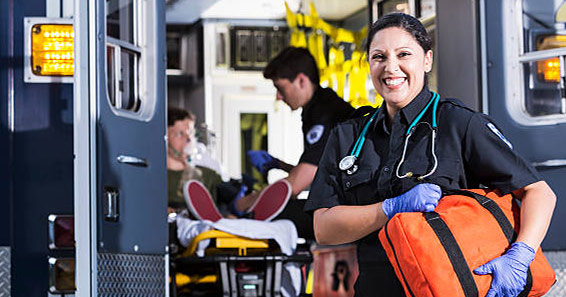EMS Week- It’s a Brave New World Out There!
1966
It became fairly obvious in 1966 that there needed to be a system for caring ill and injured patients in an emergency using a system of urgency.
Yes, 53 years ago, a document entitled Accidental Death and Disability: The Neglected Disease of Modern Society was published calling out the American healthcare community to the realities of concerning clinical survival rates post-trauma in the United States.
And so, over the next decade following the release of the article, modern EMS began to take shape.
Many of us who have been around EMS for a long time remember the television show Emergency! This was the Country’s first populist look into this new thing called paramedicine and modern rescue techniques.
America was awakening to the reality that the “scoop and run” philosophy of the funeral hearse turned ambulance was soon to give way to studies and the implementation of operations and a system design to help prevent the growing trend of death and permanent disability due to catastrophic injuries, as well as the growth of education surrounding life-saving techniques that even the general public could practice.
This week…
Now, five decades later, we take a pause to celebrate yet another National EMS Week.

Evolving from that 1966 report with decades of follow-up research and studies that included testing and trials, successes and some failures, Emergency Medical Services finds that it is once again on the cusp of yet another re-tooling.
Using a 50-plus year repository of information and data collected from the field to examine the methods we use and the outcomes resulting from those methods, we find that new variables and antagonists are driving EMS to change to adapt to our brave new world.
Really, does anyone enjoy change?
So, it doesn’t surprise us that there are those that push back against new methods and practice techniques in EMS. We humans enjoy comfort. But change pushes us out from our comfort zones into the unknown and that’s where employing a newly revised EMS care model can become stressful and even confusing to some.
National EMS Scope of Practice
Over the past 20 years, the National Highway Traffic Safety Administration (NHTSA) has been tasked with collecting the brains of the healthcare industry to come up with a Practice Model that spells out the direction and goals for today’s EMS system in America.
The NHTSA prepared one-such report dating back to 1996 releasing the National EMS Agenda for the Future which was again revised in 2000 with evolution into 2007 when the National EMS Scope of Practice Model was born.
The NHTSA’s continued efforts have now resulted in yet another iteration with the publishing of an updated Scope of Practice Model.
The 2007 Practice Model documented evidence and justifications for useful interventions and treatments which led to the sharper focus for 2019, addressing the most pressing and frequent field events of our time, including…
-
- Use of opioid antagonists by all levels of EMS personnel
- Therapeutic hypothermia in cardiac arrest (i.e., targeted temperature management)
- Pharmacological pain management following acute cardiac events
- Hemorrhage control (i.e., tourniquets and hemostatic dressings)
- CPAP/BiPAP at the EMT level
Additionally, peppered in are references to the need for continued review of the standardization of certifications and licensing of EMS personnel across State lines for the purposes of reciprocation and barrier elimination, as the pool of EMS providers shrinks to all-time lows.
The Scope of Practice Model also addresses changing expectations of EMS, such as providing medical care at mass gatherings and preparation for high-risk operations in support of fireground operations and law enforcement tactical deployments.
Growing Data
Helping us review EMS as a whole is the growth and use of technology and data. The focus of the EMS industry is slowly moving to a quality model, spearheaded by the National Association of EMS Physicians (NAEMSP) which recently published a position statement entitled Defining Quality in EMS focusing on patient outcomes versus operations metrics that narrowly view quantity reviews such as response time variables, etc. which has been the norm until recently.
Quality versus quantity in EMS looks at the core of EMS delivery and how care is impacted by system design, geography, equipment, staffing, provider levels and knowledge base within the provider community.
Expanding the Provider
All of the above expands the role of the provider as we grow into our brave new world as pre-hospital clinicians. The EMS provider today is more keenly aware of his/her place in an overlapping multi-layer paradigm of relationship roles that incorporate the provider’s education, competency, license and credentialing by the physician community. All of this will increase the breadth and depth of the provider like never before.
In short, the “ambulance driver” has become a more highly-trained, focused and skilled individual driven to provide quality care that will be measured by growingly sophisticated outcome studies and reviewable metrics.
But, in the end, it’s you out there doing the best job you can possibly do. For that, we salute you and wish you a very successful National EMS Week! Take a bow… you deserve it!!